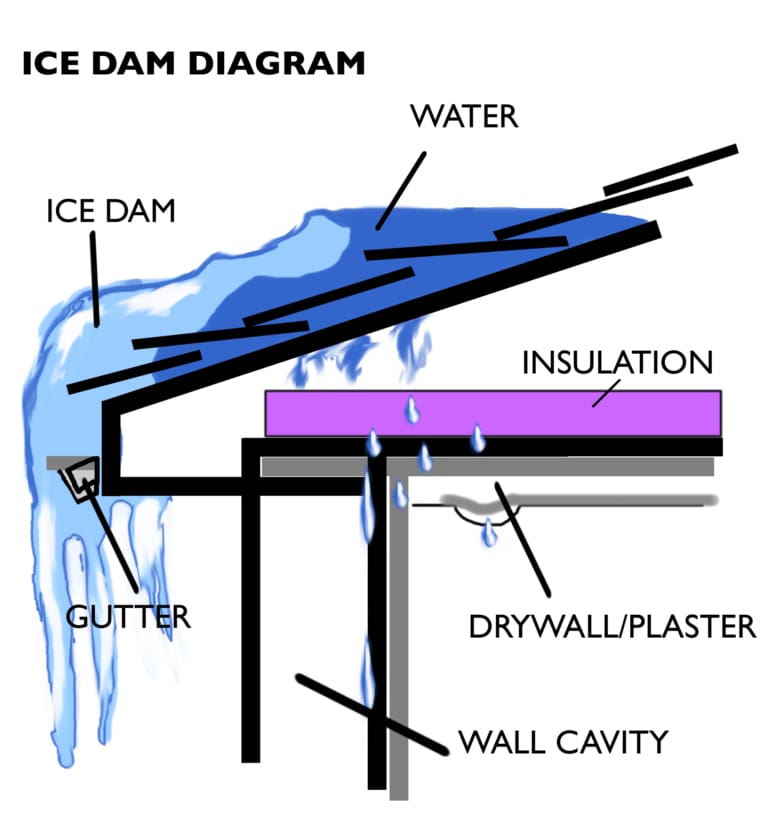Ice Dams
Ice dams are an unpleasant part of winter for many Minnesota homeowners.
The Minnesota Department of Commerce offers tips for how to deal with ice dams now and how to prevent them in the future, which can also save you money on your heating bills.
One way to prevent ice dams is by removing snow from your roof. While you can try to do it yourself with a snow rake, it may be best to hire a professional snow remover, especially if it takes getting on the roof or using a ladder. Put safety first.
Attic air leaks = ice dams
Although many years ago thought of as a problem with roofing or attic ventilation, ice dams are actually caused by the presence of warm, moist air in the attic, combined with snow on the roof and the right weather conditions. Ice dams occur when heat gets into the attic and melts the underside of the snow on the roof. The melted snow then flows down the roof surface until it reaches a cold spot (such as the eaves or soffit) where it forms a frozen dam, behind which more snowmelt and ice pile up. The ice buildup can back up under the shingles, damaging them and allowing water to leak to the ceilings and walls below.

Air leaks can damage insulation and more
Water vapor carried with the escaping warm air may condense, freeze, and build up in the insulation. When this water builds up, it can soak the insulation (wet insulation has little insulating value), cause plaster and paint to crack and peel, and lead to rot and other structural damage.
What NOT to do:
• Installing heating cables will shorten
the life of your roof and cost you
money to operate.
• Removing the ice with
chippers, chemicals,
or heat can damage
shingles, gutters, and
other building components.
• Adding roof vents—including
powered vents—will not eliminate ice dams, and often make
the problems worse.
• Although additional insulation—especially
higher density foam on the top plate of exterior walls—can reduce heat transfer to the
roof deck, insulation alone is insufficient.

